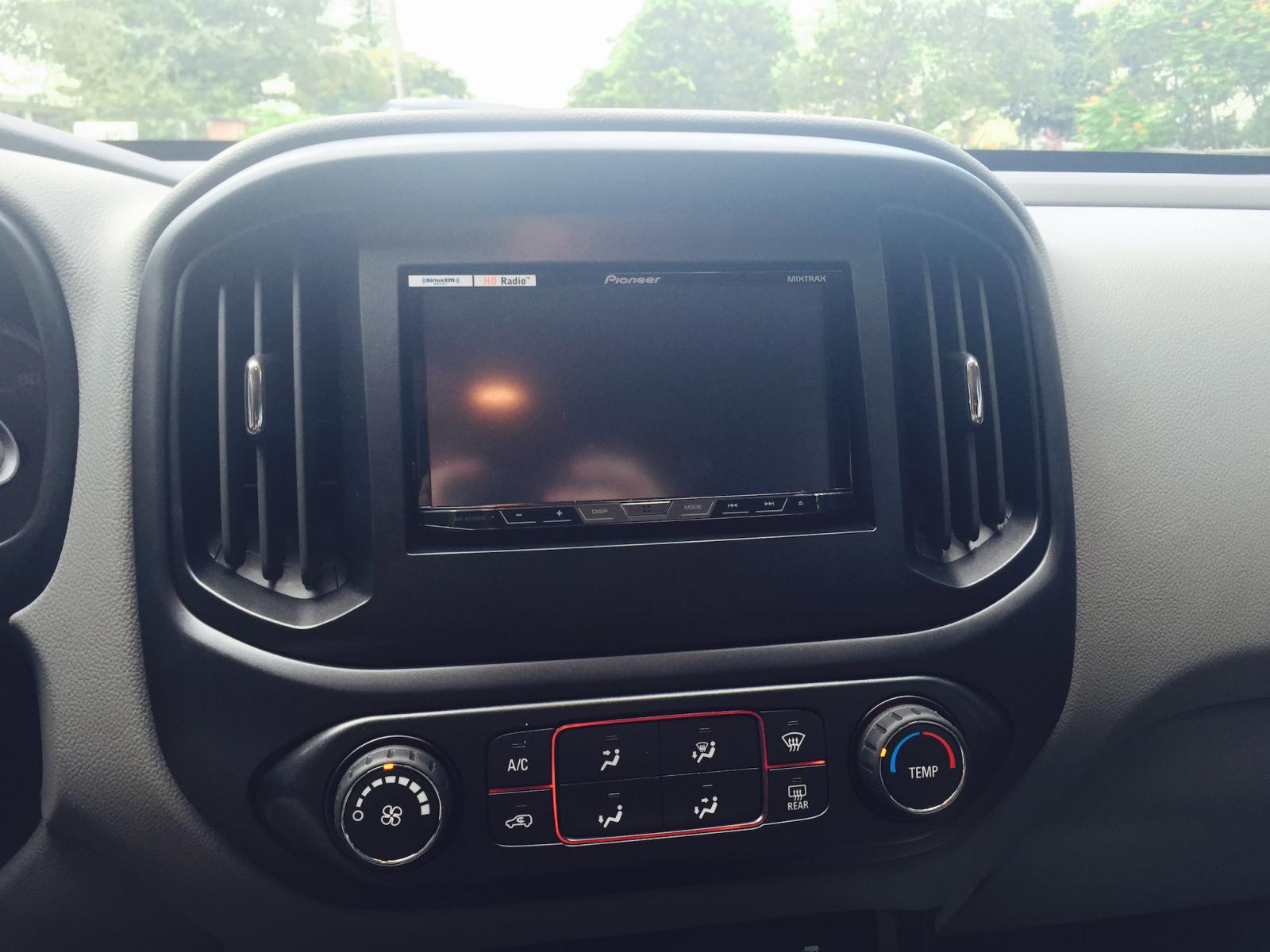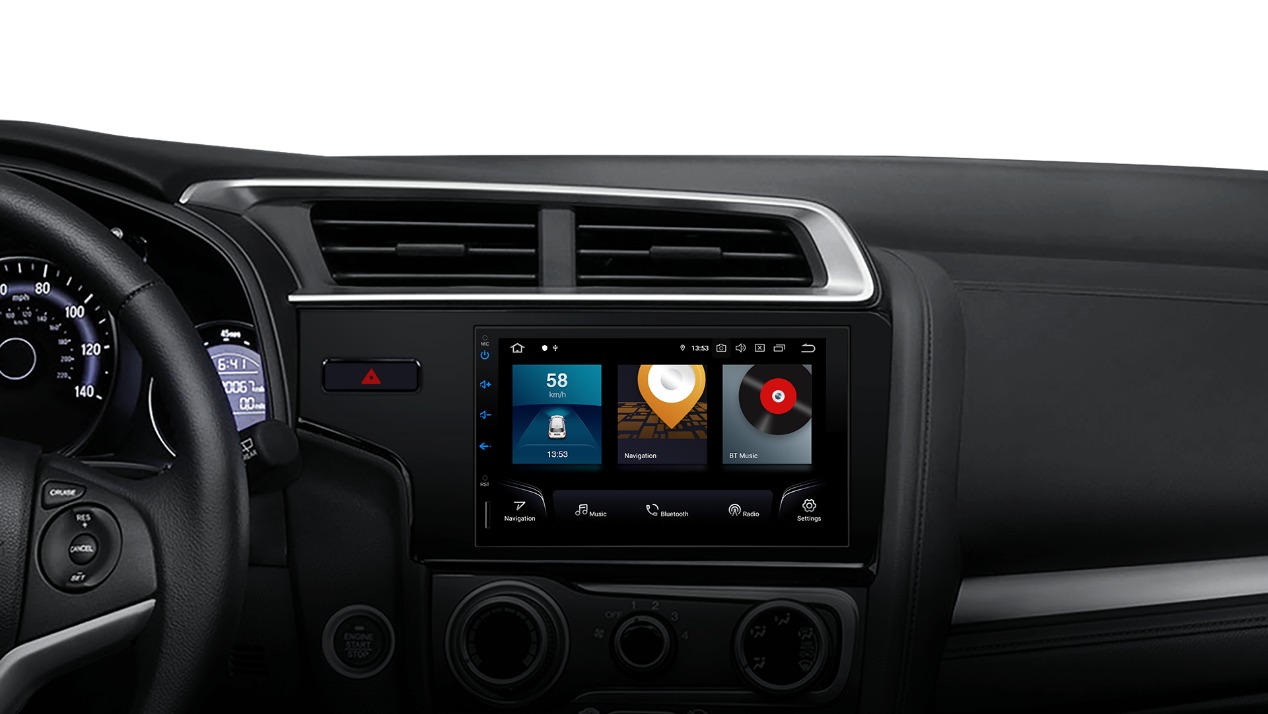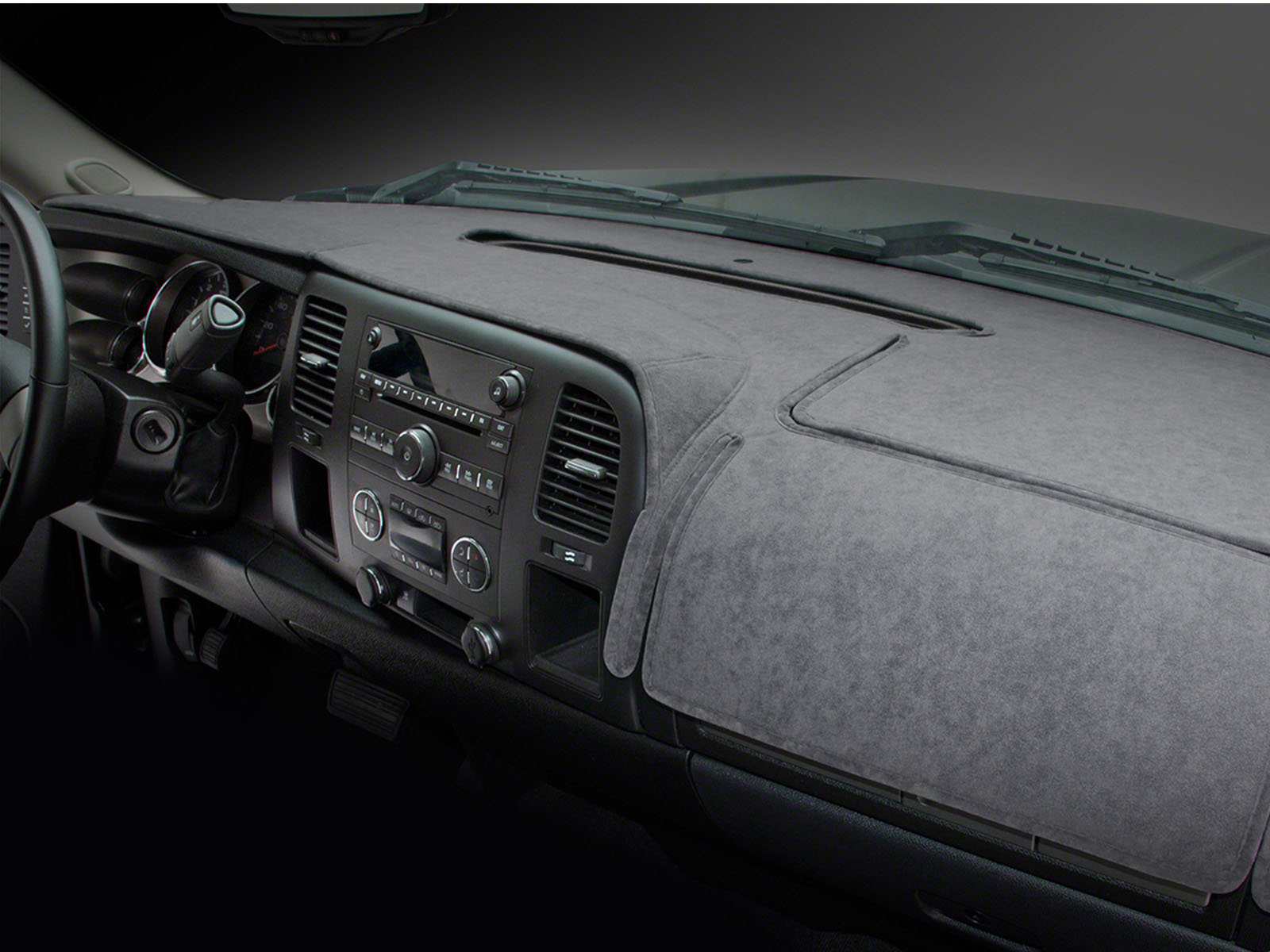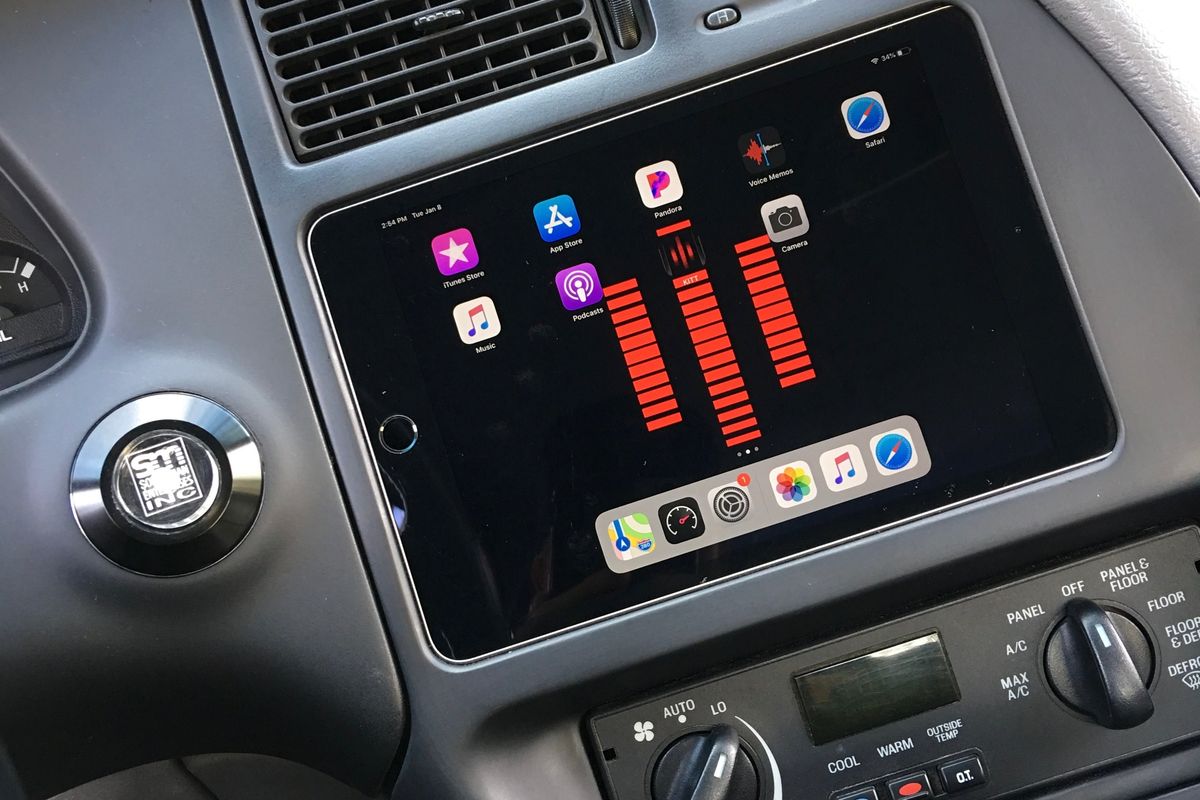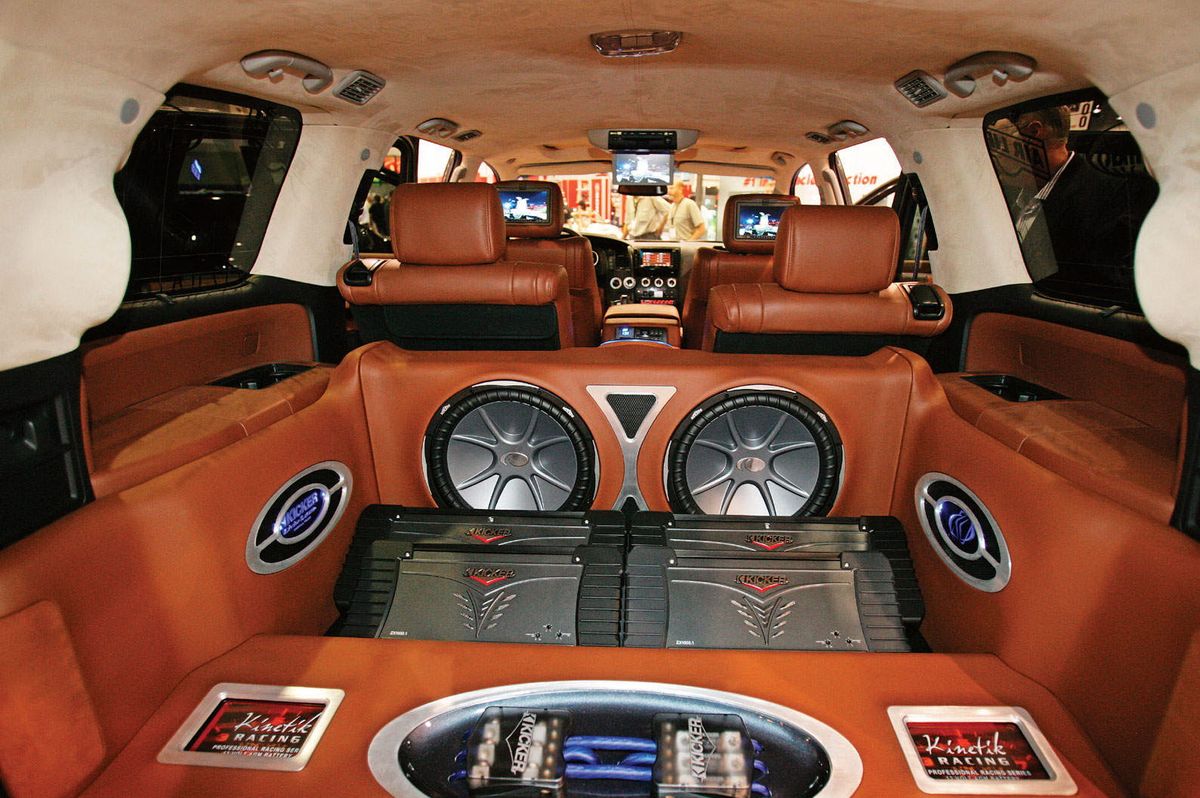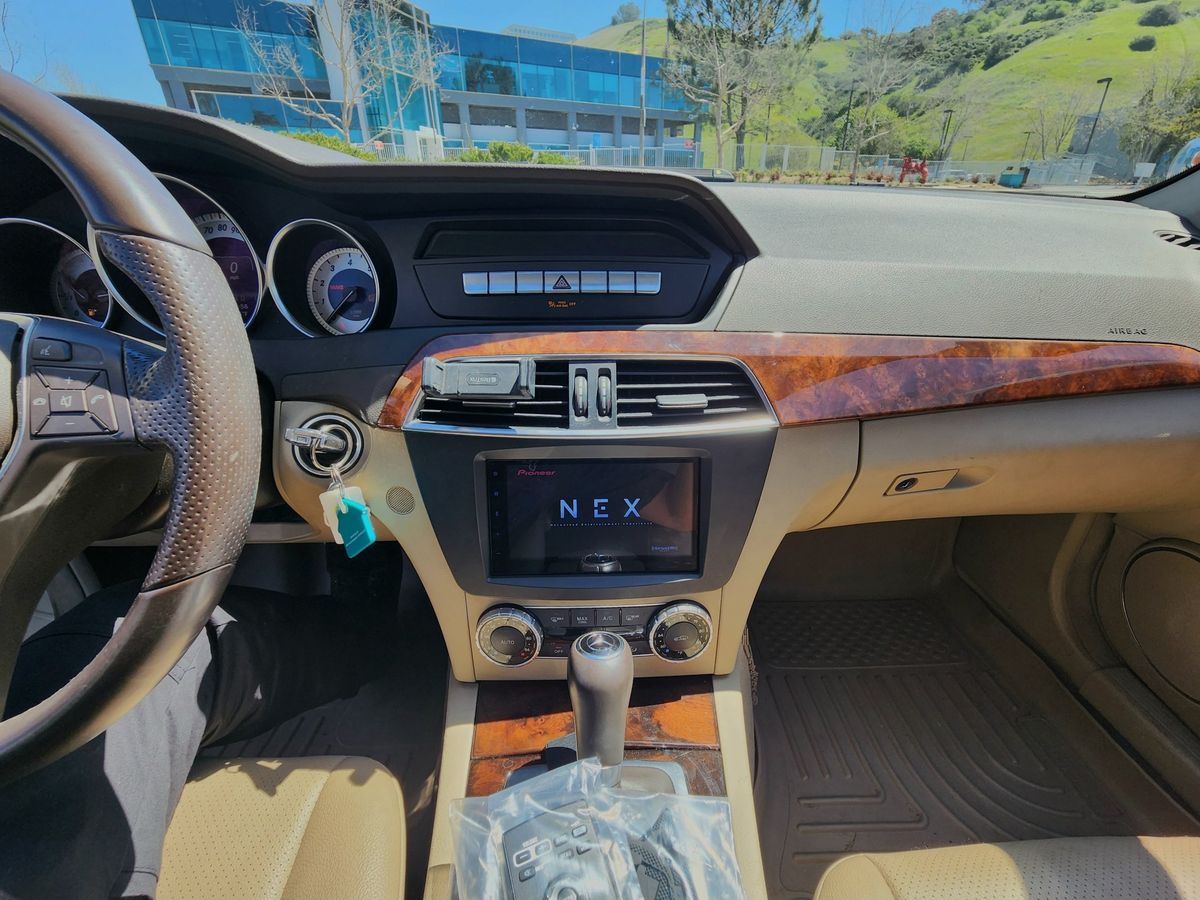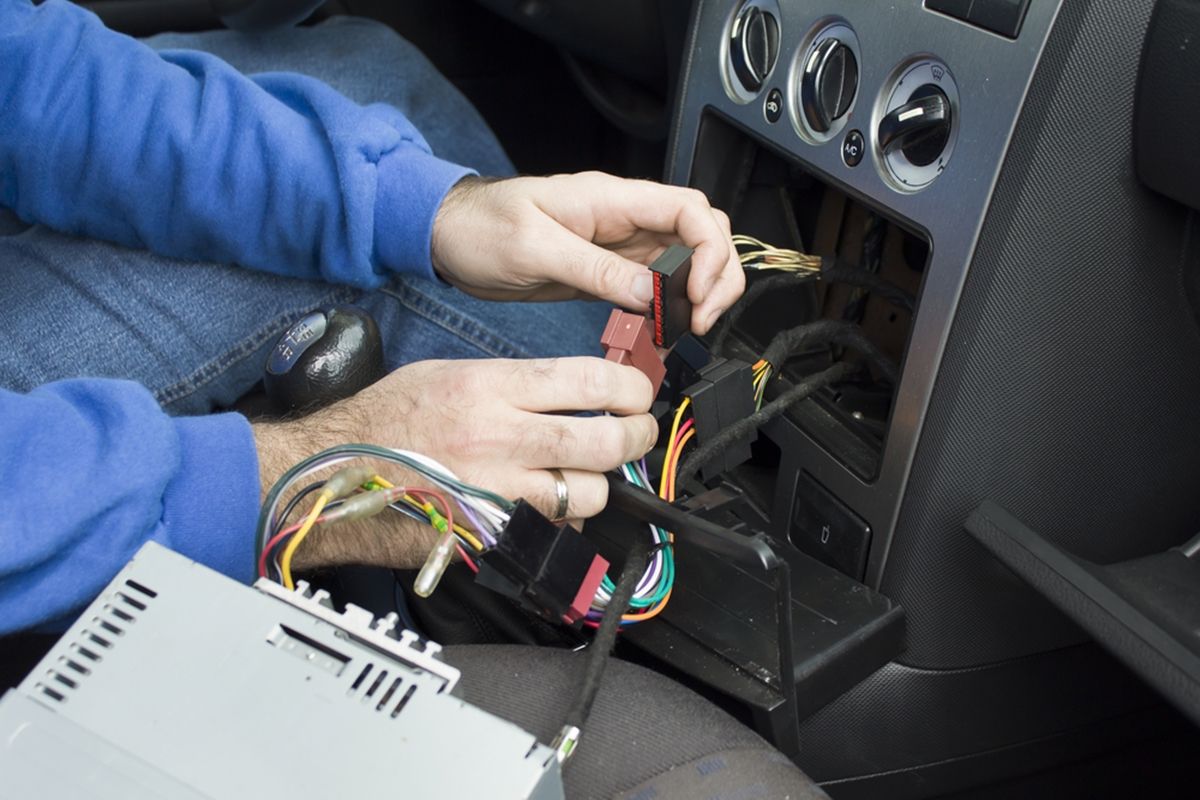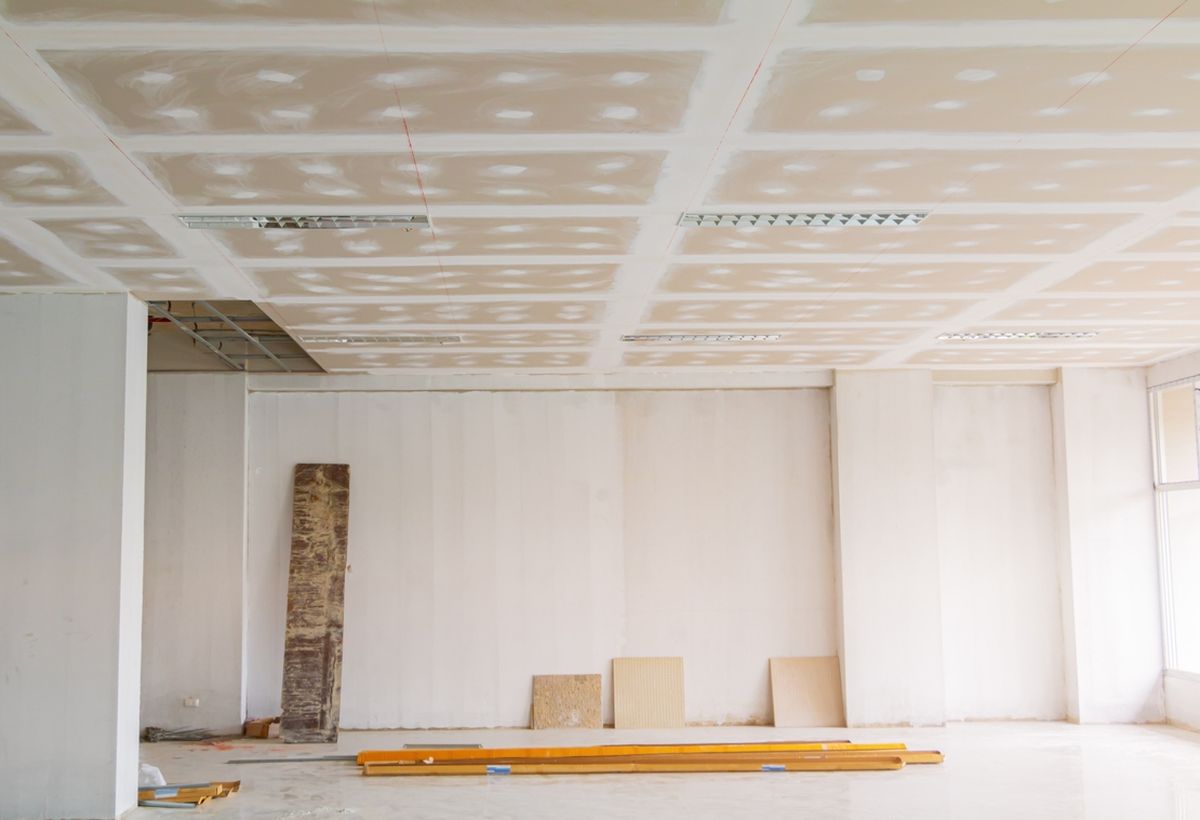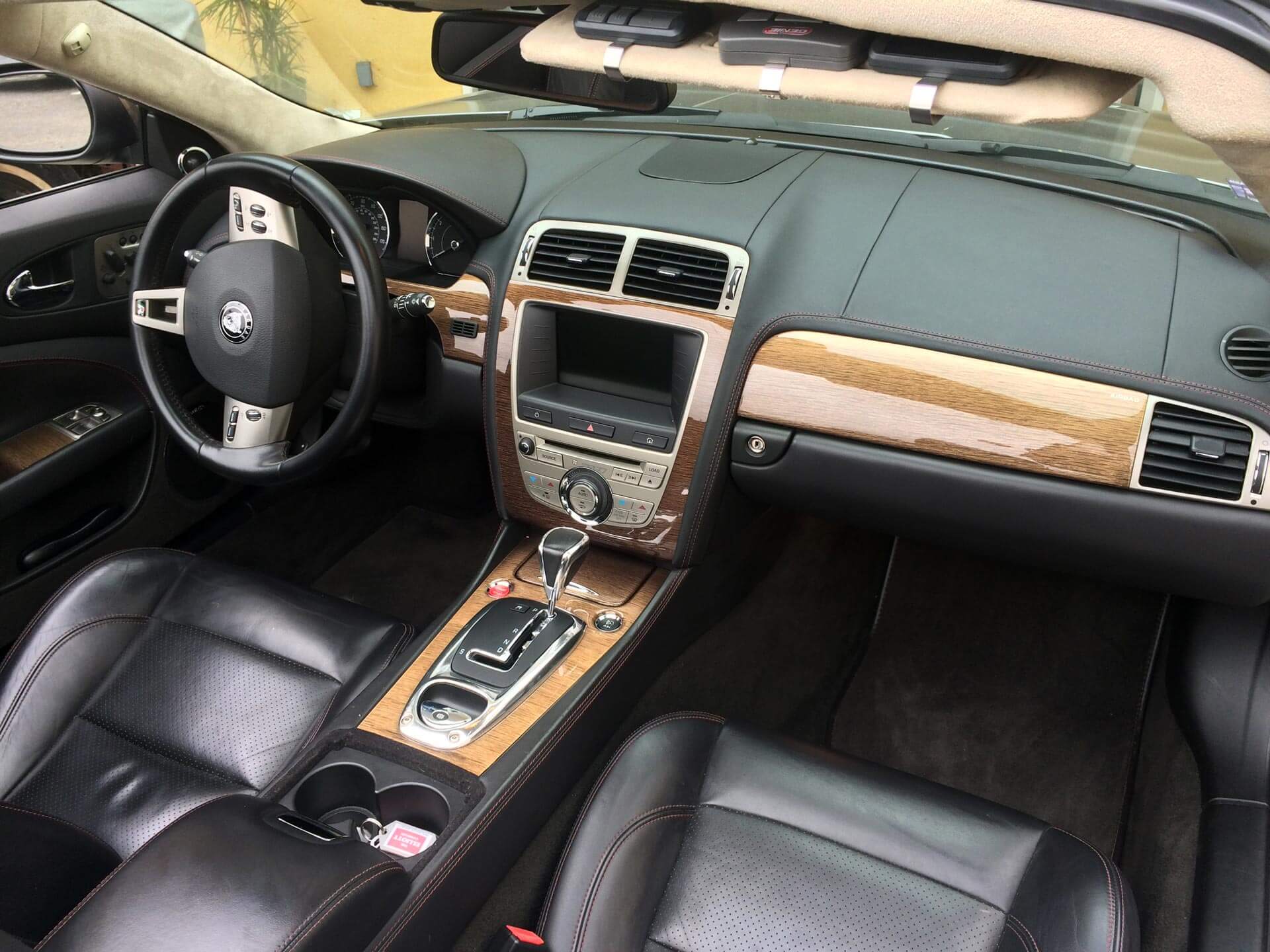Home>Production & Technology>Stereo>How Much Is A Stereo Installation
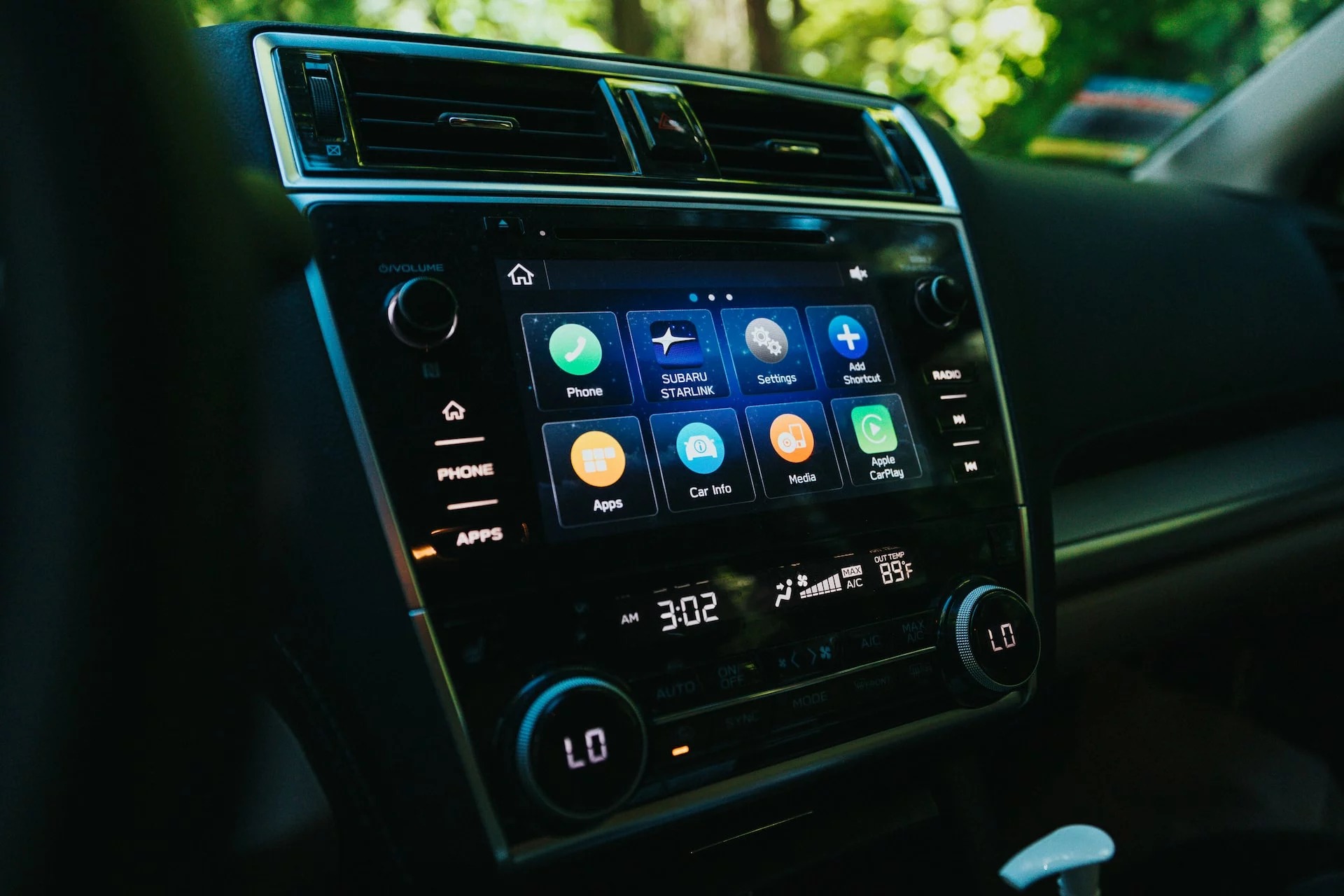

Stereo
How Much Is A Stereo Installation
Modified: January 22, 2024
Looking to install a stereo in your car? Find out how much it costs and get expert advice on stereo installation services to enhance your audio experience.
(Many of the links in this article redirect to a specific reviewed product. Your purchase of these products through affiliate links helps to generate commission for AudioLover.com, at no extra cost. Learn more)
Table of Contents
Introduction
Stereo systems have become an essential part of our lives, whether we’re driving in our cars or enjoying music in our homes. The quality and performance of a stereo system greatly impact our overall audio experience. While there is a wide range of options available on the market, understanding the cost factors involved in stereo installation is crucial in making informed decisions.
When it comes to stereo installation costs, there are several factors that can influence the overall price. These factors include the type of stereo system, the complexity of the installation process, additional services required, and whether you choose to do the installation yourself or hire a professional.
In this article, we will delve into each of these aspects to help you get a better understanding of how much a stereo installation might cost you. Whether you’re looking to upgrade your car’s audio system or set up a home theater, knowing the average costs and options available will empower you to make the right choice for your needs and budget.
So, if you’re eager to discover how much a stereo installation might set you back, let’s dive into the details.
Factors Affecting Stereo Installation Costs
When it comes to determining the cost of stereo installation, there are several key factors that can influence the final price. Understanding these factors will help you get a clearer picture of what to expect and enable you to plan your budget accordingly. Let’s take a closer look at the primary factors affecting stereo installation costs:
- Type of Stereo System: The type of stereo system you choose plays a significant role in determining the installation cost. Basic stereo systems with standard features and functionalities typically have lower installation costs compared to high-end systems with advanced technologies and customizations.
- Complexity of Installation: The complexity of the installation process can impact the cost. If your vehicle or home requires extensive modifications or wiring, the installation may be more labor-intensive, thus increasing the cost. On the other hand, if the installation is relatively straightforward and plug-and-play, it may result in a lower installation fee.
- Additional Components and Accessories: If you’re looking to add additional components or accessories to your stereo system, such as amplifiers, subwoofers, or special speakers, this can increase the overall installation cost. These additional components often require more time and expertise to install properly, leading to higher installation fees.
- Customization and Integration: If you have specific customization requirements or need to integrate your stereo system with other devices or systems, such as navigation systems or smartphones, it can add to the installation complexity and cost. Custom installations often involve additional labor and expertise, resulting in a higher overall cost.
- Location and Accessibility: The location and accessibility of the installation site can influence the cost as well. If the installation is in a remote or hard-to-reach area, installers may charge extra for travel expenses or the additional time required.
These are the primary factors that can impact the cost of stereo installation. Keep in mind that prices can vary depending on the specific circumstances and the expertise of the installer. It’s always a good idea to get quotes from multiple installers to compare prices and services offered. By considering these factors, you can better estimate the cost of your stereo installation project and make an informed decision.
Types of Stereo Systems
When it comes to stereo systems, there are several types to choose from, each catering to different needs and preferences. Understanding the different types of stereo systems available will help you make an informed decision about the installation that best suits your requirements. Let’s explore some popular types of stereo systems:
- Car Stereo Systems: Car stereo systems are specifically designed for vehicles and can greatly enhance your driving experience. These systems typically include a head unit (radio), speakers, and optional components such as amplifiers and subwoofers. Car stereo systems come in various configurations, including single-DIN and double-DIN units, and can offer features like Bluetooth connectivity, touchscreen displays, and advanced audio controls.
- Home Stereo Systems: Home stereo systems are perfect for enjoying music and audio in the comfort of your own home. These systems usually consist of a receiver, speakers, and various audio sources such as CD players, turntables, or streaming devices. Home stereo systems come in a range of different setups, including all-in-one systems, component systems, and surround sound systems for a more immersive audio experience.
- Portable Bluetooth Speakers: Portable Bluetooth speakers are a popular choice for those who want to take their music on the go. These compact speakers connect wirelessly to your smartphone or other devices and provide high-quality sound wherever you are. Portable Bluetooth speakers are lightweight, easy to use, and often come with rechargeable batteries, making them ideal for outdoor gatherings or travel.
- Wireless Multi-room Audio Systems: Wireless multi-room audio systems allow you to stream music throughout your home, providing seamless audio in multiple rooms. These systems often use Wi-Fi or Bluetooth connectivity and allow you to control the music from a smartphone or other devices. Wireless multi-room audio systems offer flexibility and convenience, enabling you to enjoy synchronized music in different areas of your home.
- Marine Stereo Systems: Marine stereo systems are specifically designed for boats and other marine vessels. These systems are built to withstand the harsh marine environment, including exposure to water, salt, and sun. Marine stereo systems often feature waterproof components, UV-protected faceplates, and corrosion-resistant materials to ensure reliable performance in marine settings.
These are just a few examples of the types of stereo systems available. Each type offers its own set of features, functionalities, and installation requirements. Considering the type of stereo system that aligns with your needs and preferences will help you decide on the right installation for your vehicle or home.
Average Cost of Basic Stereo Installation
The cost of basic stereo installation can vary depending on several factors, such as the type of system, the complexity of the installation process, and the location. However, we can provide a general estimate to give you an idea of what to expect.
For car stereo installations, the average cost typically ranges from $100 to $300. This cost usually includes the labor for installing the head unit, connecting the speakers, and wiring any additional components like amplifiers or subwoofers. Keep in mind that this is a rough estimate, and prices may differ depending on the specific system and the expertise of the installer.
For home stereo installations, the average cost can range from $200 to $500. This cost includes the installation of the receiver, connecting the speakers, and any additional components or accessories. The price may vary based on the complexity of the setup, whether it involves wall mounting speakers or integrating the system with other home entertainment devices.
It’s important to note that these estimates are for basic stereo installations. If you’re looking for more advanced features, customizations, or specialized equipment, the cost may increase accordingly. Additionally, any additional labor, wiring, or modifications required for specific vehicles or homes may also affect the overall cost.
It’s always wise to request quotes from multiple installers to compare prices and services offered. Be sure to inquire about any warranties or guarantees provided by the installer to ensure that you’ll receive quality workmanship.
Lastly, while cost is a crucial consideration, it’s essential to prioritize the quality of the installation. Hiring a professional installer with expertise in stereo systems will ensure that your system functions optimally and lasts for a long time. Remember, an installation done right can significantly enhance your audio experience.
Cost of Upgrading Stereo Components
If you’re looking to upgrade the components of your stereo system, such as the speakers, amplifier, or head unit, it’s important to understand the associated costs. Upgrading stereo components can enhance the sound quality and overall performance of your system, but it’s essential to consider the expenses involved.
The cost of upgrading stereo components can vary depending on several factors, including the brand, quality, and type of components you choose. Here are some typical cost ranges for common stereo upgrades:
- Speakers: Upgrading your speakers is one of the most common ways to improve sound quality. The cost of new speakers can range from $50 to $500 or more per pair, depending on the brand and quality. Higher-end speakers often provide superior sound reproduction and durability, but they also come with a higher price tag.
- Amplifiers: Adding or upgrading an amplifier can provide more power and clarity to your audio system. Amplifiers can range in price from $100 to $1000 or more, depending on the wattage, brand, and features. It’s important to match the amplifier’s power capabilities to your speakers to avoid damaging them.
- Head Unit: The head unit, or the radio receiver, is the centerpiece of your stereo system. Upgrading the head unit can add features like Bluetooth connectivity, touchscreen displays, and advanced audio controls. The cost of a new head unit can range from $100 to $500 or more, depending on the brand and features you desire.
- Subwoofers: Adding a subwoofer can provide deep, powerful bass to your audio system. Subwoofers can range in price from $100 to $1000 or more, depending on the size, power, and quality. It’s important to consider the available space in your vehicle or home and choose a subwoofer that fits your needs.
These are just a few examples of the components that can be upgraded in a stereo system. Keep in mind that the costs mentioned above are general estimates, and prices may vary based on the specific brand, model, and features. Additionally, installation costs may apply if you choose to have a professional install the upgraded components.
When upgrading stereo components, it’s crucial to consider the compatibility between the existing system and the new components. Consult with a professional installer or do thorough research to ensure that the components you choose are compatible and will work together seamlessly.
By considering the costs and benefits of upgrading stereo components, you can make informed decisions that align with your budget and desired audio experience. It’s always a good idea to compare prices and read reviews to ensure that you’re investing in high-quality components from reputable brands.
Additional Services and Costs
When considering stereo installation, there may be additional services and costs to consider beyond the basic installation itself. These services can enhance the functionality and convenience of your stereo system, but they can also add to the overall price. Here are some common additional services and their associated costs:
- Wiring and Harnesses: Depending on your vehicle or home setup, additional wiring or harnesses may be required for the installation. These can include wiring for speakers, amplifiers, or connecting to specific devices. The cost of wiring and harnesses can range from $50 to $200 or more, depending on the complexity of the installation and the amount of wiring required.
- Custom Fabrication or Mounting: If you have unique installation requirements, such as custom fabrication or mounting, additional costs may apply. This can include building custom speaker enclosures, fabricating mounting brackets, or creating a customized dashboard or wall panel to integrate your stereo system seamlessly. The cost of custom fabrication and mounting will vary depending on the complexity of the request and the materials required.
- Soundproofing: If you want to minimize outside noise or enhance the sound quality within your vehicle or home, soundproofing services can be beneficial. This can involve installing sound-deadening materials, including insulation and acoustic panels in walls or doors. Soundproofing costs will depend on the size of the space and the extent of the soundproofing desired.
- Tuning and Calibration: To achieve the best sound quality and performance from your stereo system, professional tuning and calibration services are recommended. This involves adjusting the settings, equalization, and speaker positioning to optimize audio output. The cost for tuning and calibration services can range from $100 to $300 or more, depending on the complexity of the system and the expertise of the professional.
- Integration with Other Devices: If you want to integrate your stereo system with other devices, such as smartphones, navigation systems, or home automation systems, additional costs may apply. This can include the installation of adapters, interfaces, or programming to ensure seamless integration. The cost of integrating with other devices will vary depending on the specific devices and the expertise required.
These additional services can enhance the overall functionality and performance of your stereo system. It’s essential to discuss and clarify these services with your installer to fully understand the associated costs before undertaking the installation.
Keep in mind that the costs mentioned above are general estimates and may vary based on various factors, including the complexity of the installation and the specific requirements of your vehicle or home. Obtaining quotes from multiple installers and comparing services and prices will help you make an informed decision and ensure that you’re getting the best value for your investment.
DIY vs. Professional Installation
When it comes to stereo installation, you have the option to either tackle the project yourself or hire a professional installer. Both approaches have their pros and cons, so it’s important to carefully consider which option is best for you. Here’s a comparison of DIY (Do-It-Yourself) installation versus professional installation:
DIY Installation
Pros:
- Cost Savings: DIY installation can save you money on labor costs, as you won’t be paying for professional services.
- Learning Experience: Installing your own stereo system can be a rewarding and educational experience, allowing you to acquire new knowledge and skills.
- Control and Personalization: DIY installation gives you full control over the process, allowing you to personalize and customize your stereo system to your liking.
Cons:
- Complexity and Time: Stereo installation can be complex and time-consuming, especially if you have limited experience or knowledge in the field. It may require extensive research, trial and error, and troubleshooting.
- Potential Mistakes: Without professional expertise, there is a risk of making mistakes during the installation, which can lead to performance issues or damage to your equipment.
- Limited Warranty: DIY installations may not come with a warranty or guarantee, leaving you responsible for any repairs or replacements if something goes wrong.
Professional Installation
Pros:
- Expertise and Skill: Professional installers have the knowledge, skills, and experience to ensure a proper and efficient installation, resulting in optimal system performance.
- Time-Saving: Hiring a professional saves you the time and effort required for research, installation, and troubleshooting, allowing you to enjoy your stereo system sooner.
- Warranty and Support: Professional installations often come with warranties or guarantees, providing you with peace of mind and protection if any issues arise.
Cons:
- Cost: Professional installation services come with a cost, which can vary depending on the complexity of the installation and the expertise of the installer.
- Less Control: Hiring a professional means relinquishing some control over the installation process, as you’ll be relying on their expertise and recommendations. This may limit personalization options.
Ultimately, the decision between DIY and professional installation comes down to your comfort level, experience, budget, and time constraints. If you have the necessary knowledge, skills, and tools, and are willing to invest the time and effort, DIY installation can be a viable option. However, if you prefer a hassle-free and expertly executed installation, or if you lack the necessary expertise, hiring a professional installer is the recommended choice to ensure a seamless experience.
Conclusion
Installing a stereo system can greatly enhance your audio experience, whether you’re in your car or at home. Understanding the factors that influence stereo installation costs and the different types of stereo systems available will help you make informed decisions that align with your needs and budget.
When it comes to basic stereo installation, costs can vary depending on factors such as the type of system and the complexity of the installation process. It’s important to request quotes from multiple installers and compare prices to ensure you’re getting the best value for your investment.
If you’re looking to upgrade stereo components, such as speakers, amplifiers, or head units, be prepared for additional costs. Researching different brands and models and considering compatibility with your existing system will help you make informed decisions and find the right components for your needs.
Deciding whether to pursue DIY installation or hire a professional installer depends on your comfort level, expertise, and availability of time. While DIY installation can save money and provide a learning experience, professional installation offers expertise, time-saving, and warranty support. In conclusion, selecting the right stereo system and considering installation costs and options will ensure that you end up with a high-quality system that meets your audio needs. Whether you’re upgrading your car’s audio system or setting up a home theater, a well-installed stereo system will provide you with years of satisfying audio enjoyment.

